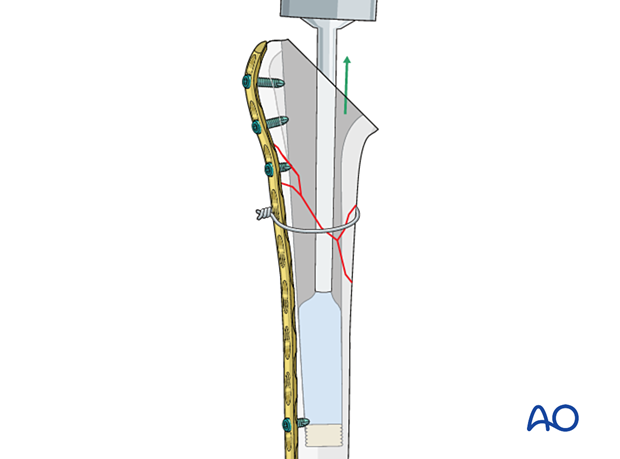Basic technique – hybrid stem
1. Revision implant - canal preparation
Provisional reduction of a comminuted fracture may be provided by cerclage wire or sutures.
The appropriate plate for bridging fixation may be applied and provisionally fixed proximally and distally, taking care not to obstruct the implantation of a planned humeral component. Provisional monocortical screws are recommended.

The canal is prepared using manual reamers of increasing size, until an appropriate diaphyseal fit is obtained.

- Replace the screw with a shorter screw, or a screw with a blunt tip.
- Downsize the diameter of the humeral component.

Distal segment cementing technique
If the fracture pattern is not amenable to anatomic reduction, a modified cementing technique must be used for the distal segment to prevent cement interfering with bone healing.

A cement restrictor is used to prevent distal filling of the medullary canal with cement. The position of the restrictor is guided by preoperative planning. Ideally, the humeral component should project approximately four or five centimeters distal to the fracture to ensure that distal cement fixation is adequate for primary stability.
A long cement introducer is used to backfill the distal medulla up to the level of the fracture.

The definitive implant is introduced slowly, correcting for rotational alignment and height before fully seating the implant.
Any cement that has been extruded from the fracture site must be removed, so that:
- Nerve and blood vessel injury is avoided
- Fracture healing is facilitated

Definitive fixation of the fracture
With the implant securely cemented into the distal segment definitive fixation of the fracture can be completed using cerclage cables, wires or sutures, and screws as appropriate.














